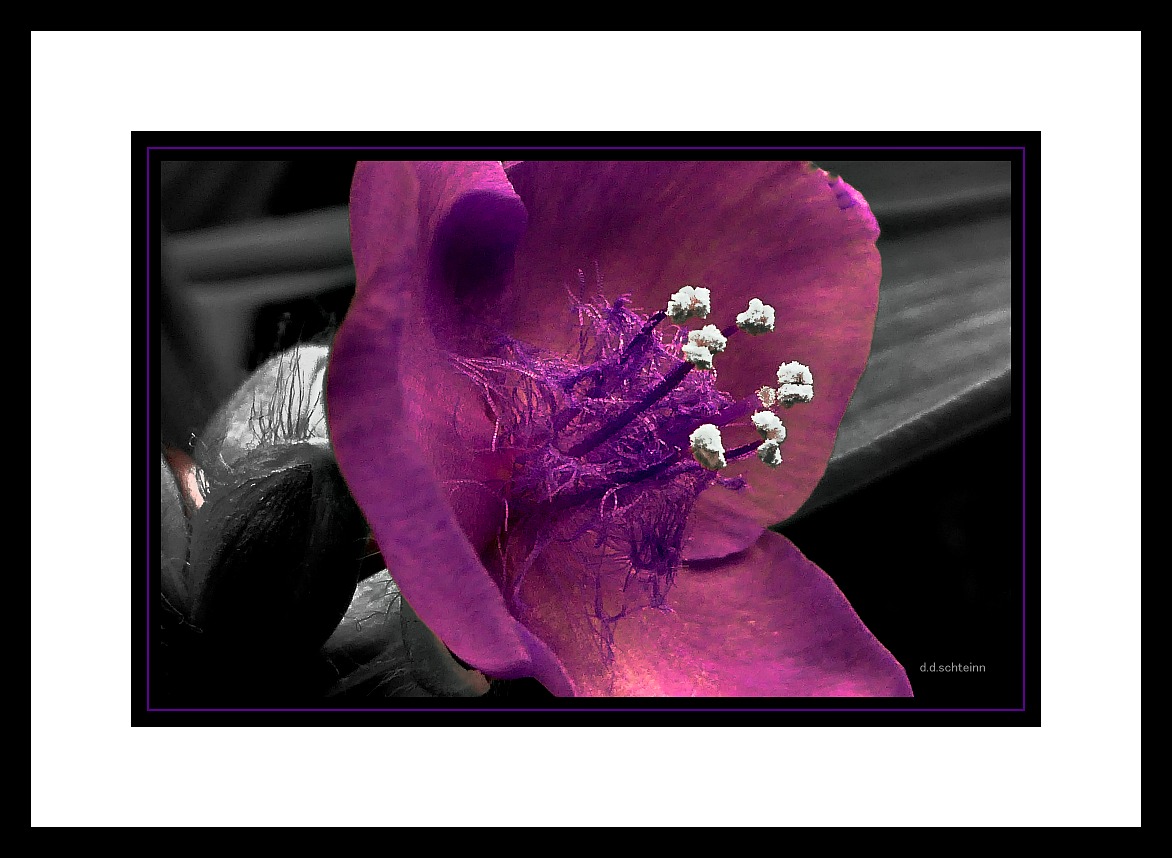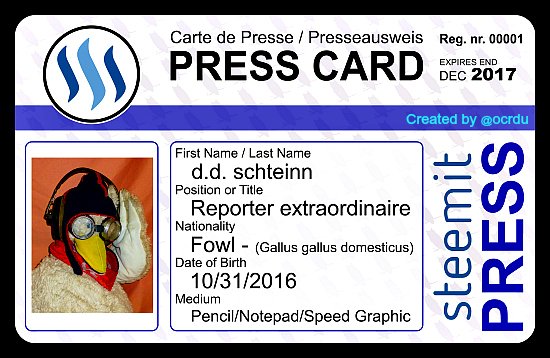Color Challenge – Violet Sunday ~ Image-No. 2: Venus -- Really Cool Photographs Of Flowers From Various Planets Of Our Solar System ~
A Schteinn Science Report - Circular
Photographs taken by the Deep Space Explorer Satellite-MrPeabody IV. Designed and built by the Engineering Department of the Schteinn College Of The Sophisticated Sciences
~Venus~

Floralroundisci mutedvioleticus var. Venusplanetoides
Common Name: Purple Satellite Dish Flower
A Harsh Environs
Very small, flowering plant found on the planet Venus, second closest planet to the Sun, after Mercury. This plant is most prevalent in the draws and crevices in the lower reaches of the Maxwell mountain range, which extends an incredible 870 km in length, with peaks towering to as high as 11.3 km in height. It is believed Floralroundisci m. inhabits zones in the altitude range from 2.7 - 5.6 km only.
Due to the extreme conditions of the planet, with surface temperatures hot enough to melt lead (465 °C) and atmospheric pressure 92 times higher than Earth (equivalent to 900m below water surface on Earth), this tiny plant has developed several incredible adaptations to survive in these harsh conditions.
Botanical Details
Firstly, it contains an immensely sturdy cell-wall structure to withstand massive atmospheric pressure spikes without collapse. And secondly, the plant possesses the colorful, reflective flower surfaces used to withstand the withering daylight temperatures of the planet. (Note: Violet is the most reflective surface color, as evidenced by the root Latin word 'Violetensus', meaning resistance to violent disturbances, particularly temperature, from without.)
Interestingly, the length of one day on Venus is equivalent to 117 days on Earth, which suggests this plant must adapt to long periods of time requiring normal sustenance (food), as compared to plant life on Earth. The atmosphere of Venus is comprised of 96% Carbon Dioxide, with virtually NO water present, as it long-ago evaporated away in the incredible heat.
This would initially suggest some version of a mass-photosynthetic process, relying on CO² as a base gas, much as on Earth, however, the resulting bi-product from plant exhalation is most certainly not Oxygen. (As on Earth). Also, the amazing presence of massive Sulfuric Acid clouds in the atmosphere, blocking most available light at the surface, eliminates this photosynthesis-based theory entirely.
Unusual Biology Explained
This is where the incredible biology of this plant comes into play. The photograph suggests the base of the plant (B&W in this image, which IS the plants true color) is made of some composite material, possibly the symbiotic incorporation of micro-particles from the planet's dark-gray basalt surface, into the plant cell-wall structure. Hence the smooth-rock look to the gray stem. (Picture right.) The plant benefits by having a hardened surface to survive the incredible elements, and the basalt is moved about the surface as the plants live, collapse and die. Beneficial to both parties.
We at the S.C.S.S. are quite certain this plant, with it's dish-shaped petal arrangement, gathers in Solar Wind particles as sustenance, and can rotate the flower structure to collect these particles. A system much like a satellite dish on the rooftops of houses on Earth, rotated to gather in the daily programming, as so instructed by we humans.
What Instructs The Flower
This 'omni-directional gathering system' is guided by the light, diaphanous hairs on the round, protrusive nodules at the flower base (picture left). The lightweight hairs bend and sway with the Solar Winds, thus telling the plant which orientation is best for gathering in it's 'food' particles from the winds. The hairs are very similar in structure and function to the antennae found on some common insects of Earth, such as the ubiquitous ant.
Notice that the small, segmented tendrils (floracilia) at the base of the stamen look very similar to the segmented tentacles found on a jellyfish of Earth, and are thought to be used in similar fashion to move minute, Solar Wind particles (electrons, protons and alpha particles) reflected by the 'petal structure', to the plants feeding orifice, at the base of the stamen-like bundle.
It is believed the incoming Solar Wind particles are reflected up from the violet petal surface, gathered into clumps (the white 'globs') on the ends of the stamen-like stalk*, then transported along the floracilia to the awaiting feeding orifice for consumption. As stated, very similar to a jellyfish on Earth, passing a fish or other food material up the tentacles, to the mouth area. In this case, minute charged particles, rather than a heavy fish.
*(NOTE: Though the stamen-like structure does look like a common stamen found on an Earth plant -- and thus a reproductive organ -- on Venus this is not a reproductive organ, but part of this elaborate feeding structure.)
Future Research
Further study into this species is needed, once we expand space exploration and land human biologists on the surface of Venus. It is incredible to consider a plant subsisting on charged particles as food. However, bringing samples back to Earth, without a negative pressure chamber, would unfortunately be impossible. The samples would implode into a bag of mush, once displayed under considerably less barometric pressure on Earth. Very unfortunate indeed.
Botanical Summary/Comparisons
Closest Comparative Plant on Earth: NONE
Reproduction Methodology: UNKNOWN -- Thought to be Asexual
Size Range: Estimated .2 cm to 2.4 cm in height
Life Span: ~2 Venusian years, equivalent to ~8540 Days On Earth
Colorization: Deep, reflective Violet
Poste Script: This image may have received "just a wee bit" of manipulation by the author, to get the colors "just right" for this particular Deep Science Project. ~ All Original Photography ~
Seven Day Series -- Photos Of Cool Plants Of Our Solar System
Indigo Saturday -- Planet Mercury

[Official Science Press Credential Here]
A huge shout-out from the freelance Science Reporter's cardboard holler-horn goes out to the amazing @ocrdu for creating this marvy little identification credential for The Schteinn Science Report. Not only is it ultra-cool, but it allows me to poke about into databases and other places I'm probably not supposed to be. Though that IS the point of this on-the-edge, razor-sharp Science reportage.

Excellent post dear friend @ddschteinn, as always very creative, I admire your work, the failures you have to create and write, congratulations on the beautiful photography.
I wish you a good night
I send you a hug.
Thanks so much for the stop in and look. And very nice compliment. I truly appreciate the support. Have a nice night an a hug back as well.
As purple is my all time favorite color, I am over the goddess moniker planet with sheer "I just got back on the internet after sleeping in the woods for the past seven days joy." to have happened upon your beautiful photo and excellent scientific report accompaniment. As always, your obsidian sharp and Encarta informative reporting has awed!
Glad you enjoyed the purple flower, put out just in your honor of coming back to our little electronic world. You were missed, though you were still in contact whenever the woodsy airwaves permitted. Stay tuned, the Science Fowl is still out and about, poking around in places he might not aughta supposed to be poking about in, though having fun doing it. Have a nice night, I would imagine you have to rest up from your vacation, one of the true ironies of life. Have a nice night.
Those hairs help collect the solar wind!
Must be like Earth's mushrooms - they require only rich soil and no light!
Can't imagine being on some of these planets I'm looking into. Oh, by the way, I sent you a message in Steemit.chat
Oh, I'll check it out tomorrow - I rarely use it!
Nice photo of beautiful flower with bright color! Your Science Report is well organized! Great works! ;)
Thank you , glad you enjoy it. I am having a bit of fun putting them together. Keeps me off the streets with my eyes to the heavens....
With my great pleasure! I always admire you on this; you have very creative idea and good imagination! ;)
p.s. I love your dolphin drawing on the post of @haphazard-hstead, too! Really cute! ;))
Thanks so much for the nice thoughts on both. I was glad to help out on @haphazard-hstead 's the Dolphin party. I must 'stop in' and see how it's going. Better write some poetry or jokes or something too, that makes it much fun.
You're welcome! That'll be great and fun for the party! I look forward to reading your poetry or jokes with much interest! ;)